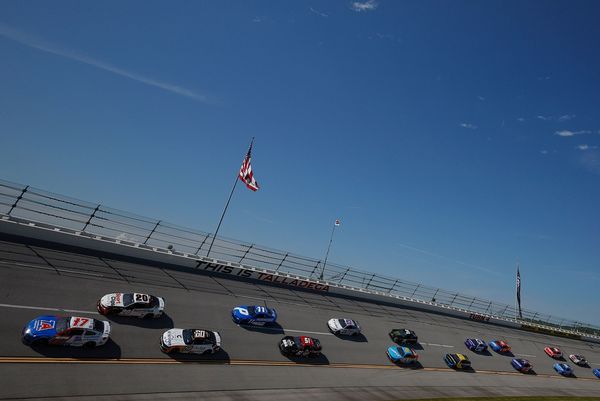
We’ve had rock’n’roll, rhythm and blues and drum’n’bass. Now the latest pairing to shake the music scene is heavy metal and church organs.
Two doom metal bands, Arð and Pantheïst, recently performed at Huddersfield town hall – accompanied by the venue’s imposing 1860 Father Willis organ. The Organic Doom gig was so successful that they plan to repeat the performance around the UK. But the collaboration is about more than just making beautiful music – the hope is that events like these will help save some of the nation’s pipe organs from destruction.
“I think it’s going to be part of the future of pipe organs,” said David Pipe, the aptly named cathedral organist at the Diocese of Leeds, who played with the bands. “I’d be very sad if we didn’t play Bach, of course. But it can sound very effective.
“It was a bonkers gig where the organ was quite literally centre stage. There were all these guys in black T-shirts and braided beards who would never darken the doors of an organ recital. So we had a new audience.”
Britain’s pipe organs face an uncertain future. Although some of them are in town halls and cinemas, most are in churches and cathedrals. Churches close regularly – around 25 a year, according to the Church of England – and the magnificent instruments they contain are often scrapped. For the churches that remain, a pipe organ can become an unaffordable luxury needing regular tuning and cleaning. Electric organs are cheaper and easier to maintain.
Organs are among the oldest instruments in existence – Winchester Cathedral had one before the Norman invasion, according to the British Institute of Organ Studies. Many were destroyed by Puritans following the Reformation, and then during Oliver Cromwell’s rule, but Victorian organ builders such as Henry “Father” Willis re-populated most of the churches.
The oldest surviving organ in the UK is in St Stephen Old Radnor, a 15th-century church in Powys, according to the National Churches Trust. But campaign group Pipe Up For Pipe Organs has saved dozens of those under threat by transplanting them to other venues.
The Organic Doom project, part of the Kirklees Year of Music, came about after a discussion between Pipe and Dr Mark Mynett, a senior lecturer in music production at the University of Huddersfield, who had recorded the organist for a separate project.
“We were talking about the pipe organ and its decline, and David was wondering if there was some way of putting the organ in a more contemporary context,” said Mynett, who is also a record producer, live sound engineer and heavy metal fan.
Hence the concert featuring Pantheïst, a funeral doom band whose lead singer wears a cassock, and Arð – pronounced Arth, an old English word meaning native land – who performed Take Up My Bones, an album telling the story of how St Cuthbert’s remains were removed from Lindisfarne then taken by monks around northern England for 200 years until they were reburied at what became Durham Cathedral.
“I think one of the problems – certainly with Pantheïst, which was probably mildly heretical – is that we would struggle to do it in a church setting,” Pipe said. “But even if this doesn’t create new organists, I just want people to hear the instrument.”
Although doom metal and pipe organs might appear to be unlikely bedfellows, Mynett said they had a lot in common. “Doom metal is a very slow genre, so you’ve got more space in the music for the sustain on the organ. Very fast music would just become a mush,” he said.
“But part of the motivation was that the pipe organ is the only natural instrument that is capable of doing what harmonically distorted electric guitar can do.” When two different notes are played at the same time, the organ creates harmonies above and below the two notes, which makes the sound seem richer and fuller.
By day, Mark Deeks, the musician behind Arð, is a piano teacher and the choirmaster of Newcastle’s Sing United community choir, but is also the keyboardist for Winterfylleth, a metal band. “I quickly clocked that piano isn’t very cool in metal-land and metal isn’t very cool in piano-land,” Deeks said. “So I have these separate identities.”
To his surprise he secured a five-album deal with one of his favourite record labels, Prophecy Productions. “I thought, if this sells 200 copies I’ll be blown away. The week it came out, it got to number 61 in the German charts. I was like a kid at Christmas.”
Mynett is now in discussions with venues around the UK to host similar performances, including in Liverpool and London.
Organs are being heard in other genres. The Organ Reframed festival, founded by the composer Claire M Singer, took place at the Union Chapel in London last year, with experimental and electronic musicians using the 1877 Father Willis organ.
“I just want the organ to be heard in different settings,” Pipe said. Hans Zimmer’s Interstellar, Richard Strauss’s Also Sprach Zarathustra recorded for 2001: A Space Odyssey, and Philip Glass’s soundtrack to Koyaanisqatsi all include organs he added. “I want children to be inspired. It’s an instrument of almost unparalleled depth. At the Royal Albert Hall in London you can feel the building shake. There’s something about it, a visual spectacle as well as the unrivalled sound of an organ at full tilt.”







